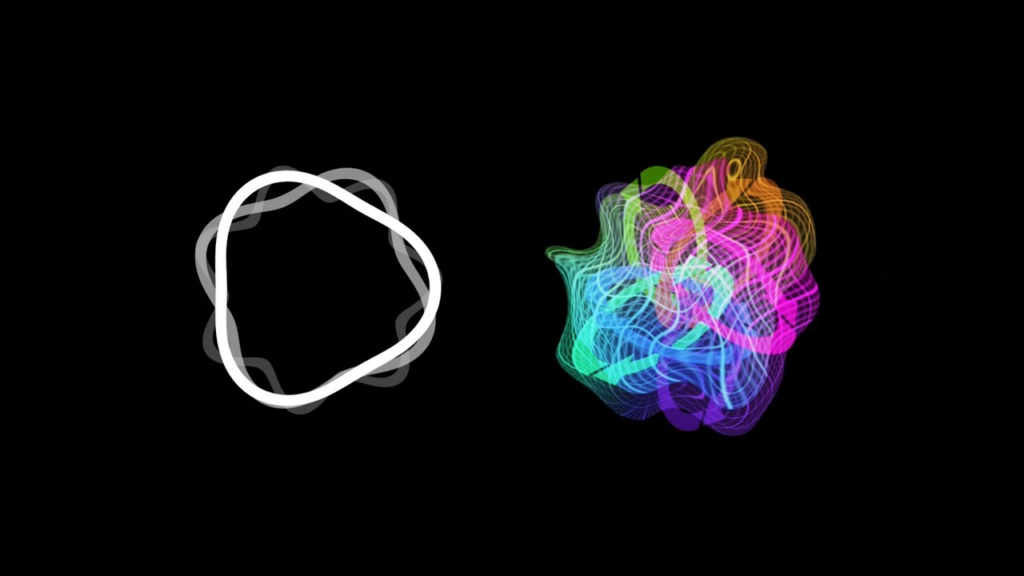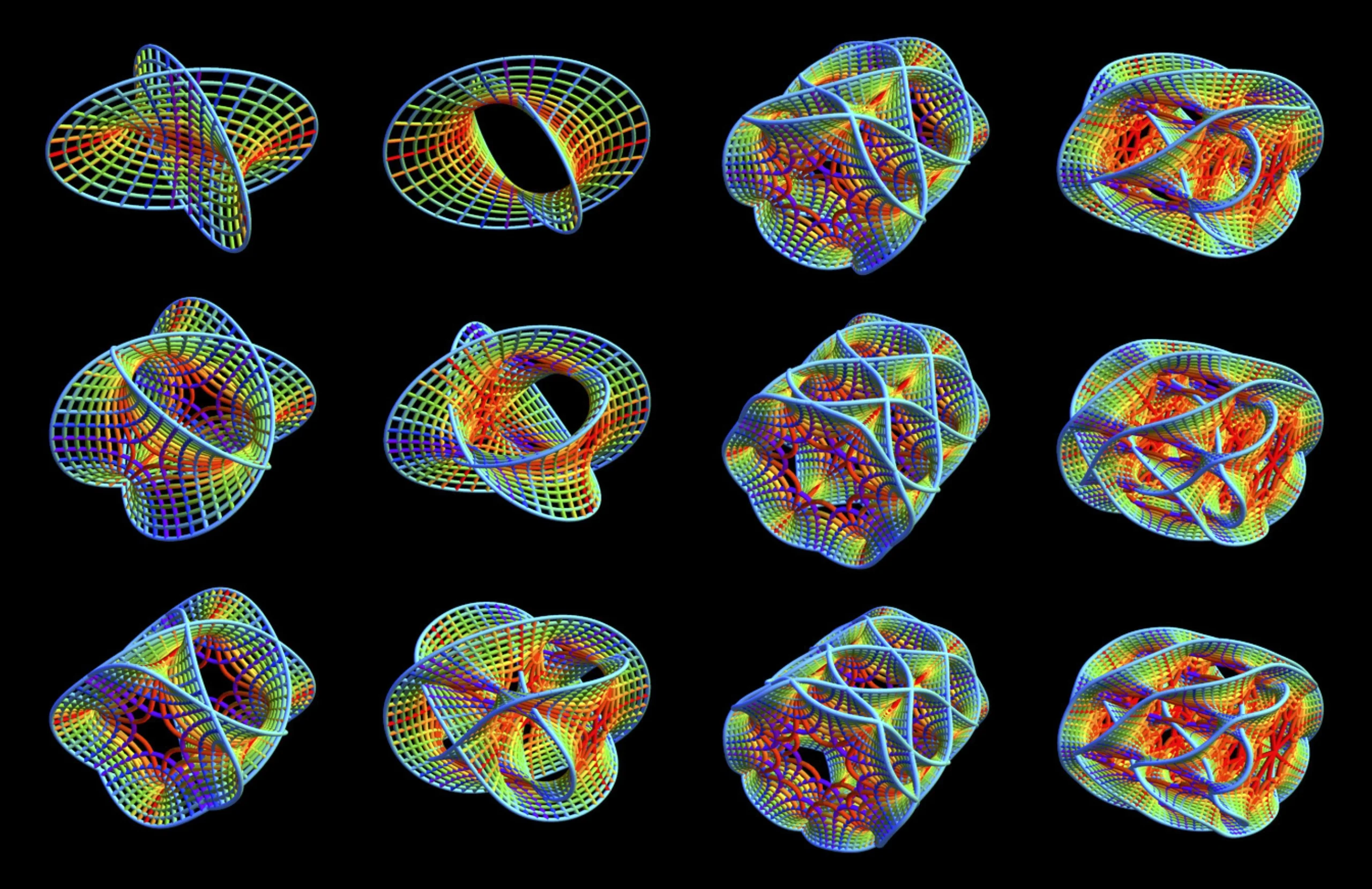Continues after advertising
In the vast expanse of the cosmos, where stars are born and galaxies dance in an intricate ballet, lies a mysterious theory that promises to unlock the secrets of the universe: String Theory. This captivating concept, at the frontier of modern physics, seeks to unravel the fundamental nature of all things, proposing that the very fabric of reality is woven from tiny, vibrating strings of energy. As we embark on this intellectual journey, let’s explore how this theory attempts to connect the vastness of the cosmos with the minutiae of quantum particles, offering a glimpse into the ultimate blueprint of the universe. 🌌
String Theory, championed by brilliant minds like Edward Witten and Brian Greene, challenges our conventional understanding of space and time. It suggests that, beyond the familiar three dimensions, there might be additional hidden dimensions, compactified and curled up beyond our perception. Imagine a world where the complexities of black holes, the enigmatic nature of dark matter, and the elusive unification of general relativity with quantum mechanics are finally illuminated through the elegant vibrations of strings. Could these minuscule strings really hold the key to understanding the universe’s greatest mysteries?
Continues after advertising
In this article, you are not just a reader but an active participant in the quest for understanding the universe’s fundamental truths. Together, let’s journey through the intricacies of String Theory, exploring its concepts, implications, and the profound questions it raises about our reality. Are you ready to unlock the mysteries of the cosmos and see the universe through the lens of vibrating strings? Let’s begin our voyage into the heart of the universe. 🌠
Understanding String Theory: An Introduction
String theory is a fascinating and complex topic that has captivated scientists and enthusiasts alike. It attempts to answer some of the most profound questions about the universe, and it does so in a unique and imaginative way. Instead of viewing the universe as being made up of tiny point particles, string theory proposes that everything is made of tiny, vibrating strings. But what does this mean, and why is it so important for our understanding of the cosmos?
Continues after advertising
What is String Theory?
String theory is a theoretical framework in which the point-like particles of particle physics are replaced by one-dimensional objects called strings. These strings can vibrate at different frequencies, and each vibration corresponds to a different particle. For instance, one vibration might produce a photon, while another might produce an electron. This elegant concept attempts to unify the fundamental forces of nature, offering a single explanatory framework.
The Dimensions of String Theory
A particularly mind-bending aspect of string theory is its requirement for additional dimensions. While we are familiar with the three spatial dimensions and time, string theory suggests the existence of additional dimensions. These extra dimensions are compactified and not directly observable, which makes the theory both intriguing and challenging to test.
Why Are Extra Dimensions Necessary?
You might wonder, why do we need these extra dimensions? The mathematics of string theory requires them to achieve consistency. In the context of string theory, these extra dimensions allow for the unification of forces and the possibility of a theory of everything. Imagine the universe as a vast tapestry, with extra dimensions providing the hidden threads that hold everything together.
The Impact on Our Understanding of the Universe

Unified Forces and the Theory of Everything
One of the key motivations behind string theory is its potential to unify all fundamental forces. In our current understanding, the universe is governed by four fundamental forces: gravity, electromagnetism, the strong nuclear force, and the weak nuclear force. String theory aims to describe all of these forces under a single framework, which has the potential to revolutionize our understanding of the universe.
Challenges and Criticisms
Of course, string theory is not without its challenges and criticisms. One major issue is its lack of experimental evidence. Because the scales at which strings operate are so incredibly small, directly observing them is beyond the reach of current technology. Critics argue that without empirical data, string theory remains more of a mathematical curiosity than a physical reality.
How Does String Theory Affect Our Daily Lives?
While string theory may seem abstract, its implications touch on fundamental aspects of our existence. Understanding the nature of the universe and its origins can reshape our perspective on life, time, and space. Although the practical applications of string theory in daily life are not yet apparent, its potential to unlock new technologies and insights is vast.
Frequently Asked Questions
How Does String Theory Differ from Other Theories?
String theory differs primarily in its foundational concept of strings versus point particles. It also introduces additional dimensions that are not present in other theories like quantum mechanics or general relativity.
Is String Theory Proven?
Currently, string theory remains unproven. Its predictions are challenging to test due to the incredibly small scale of strings and the high energy levels required to observe them.
What Are the Alternatives to String Theory?
Several alternative theories attempt to address the same questions as string theory, such as loop quantum gravity and M-theory. Each has its own approach to unifying the forces of nature.
Key Takeaways from String Theory
String theory offers a bold and imaginative framework for understanding the universe, with implications that could reshape our understanding of reality. While it remains a topic of debate and exploration, its potential to unify the fundamental forces of nature makes it a cornerstone of modern theoretical physics.
- String theory proposes that all particles are one-dimensional “strings”.
- It requires additional dimensions beyond the observable universe.
- Aims to unify all fundamental forces under one theoretical framework.
- Lacks direct experimental evidence, posing significant challenges.
As we continue to explore the universe, string theory remains a vital part of the conversation, driving research and expanding our horizons. Whether it holds the answers to the universe’s deepest mysteries is a question that remains open and exciting.
Conclusion
In wrapping up our exploration of string theory and its profound implications for our understanding of the universe, it is vital to appreciate how this theoretical framework challenges and expands the boundaries of modern physics. String theory presents us with the tantalizing possibility that all particles are, at their most fundamental level, tiny vibrating strings of energy. This notion offers a unified explanation of the forces of nature, potentially bridging the gap between quantum mechanics and general relativity—a quest that has intrigued physicists for decades.
As we navigated through the intricacies of this theory, it became evident that string theory is not just a scientific endeavor but also a philosophical journey that invites us to rethink our place in the cosmos. Its concepts encourage us to envision a universe with more dimensions than we can perceive, provoking questions about the very fabric of reality and our understanding of time and space.
As we conclude, I encourage you, dear reader, to reflect on the remarkable journey that is scientific exploration. How does the possibility of multiple dimensions alter your perception of the universe? What implications might these theories hold for the future of physics and our understanding of reality? 🌌
Your engagement with these questions contributes to the vibrant tapestry of scientific discourse and discovery. Thank you for joining this intellectual adventure. Your curiosity and willingness to delve into the unknown are invaluable assets in the collective quest for knowledge. Keep questioning, keep exploring, and remember that every great discovery begins with a spark of curiosity. 🔭

